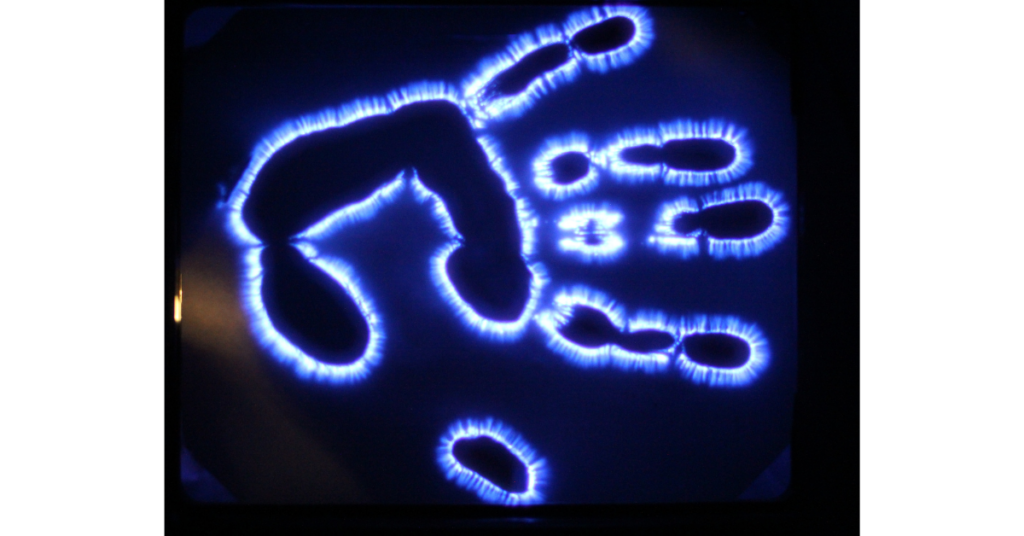Kirlian Photography Therapy
Kirlian photography works on the principle that the body has an energy field that can be ‘photographed’, and that any irregularities in the energy field recorded by this technique denote potential health hazards.
This document provides general information on what to expect when you visit a Kirlian photographer, as well as explaining briefly how the discipline works. It must be noted, however, that every practitioner works in an individual way, and may subscribe to slightly different theories as to how the practice is carried out. It is always advisable that you ask to see relevant qualifications and discuss the treatment offered to you by the practitioner if you are in any doubt whatsoever.
What is Kirlian photography?
It has been known for some time that a faint electromagnetic field or ‘aura’ exists around all living things; some people claim to be able to see these auras as bands of coloured light. It is this energy field that is recorded by Kirlian photography. By analysing the photograph, the practitioner will be able to ascertain where you have potential health problems, and thus refer you to a suitable therapist.
What to expect when you visit a Therapist
The practitioner will ask you questions relating to your medical history and perhaps that of your immediate family. Lifestyle questions regarding such matters as your dietary habits, sleep patterns, exercise regime, and stress levels will also be put to you, to ensure that a holistic approach is taken.
You will be asked to place your hand on a machine with a flat surface made of glass or metal. On this will be a piece of photographic film or paper. The exposure lasts around a minute, and the plate is charged with electricity as the picture is being taken, and it may tingle a little. You can look at your photograph immediately. The practitioner then makes an assessment, taking into account the colour and brightness of the image. Through careful analysis of the ‘aura’, the practitioner can discern drug levels in the body, the emotional state of the client, and even the stage of the menstrual cycle.

